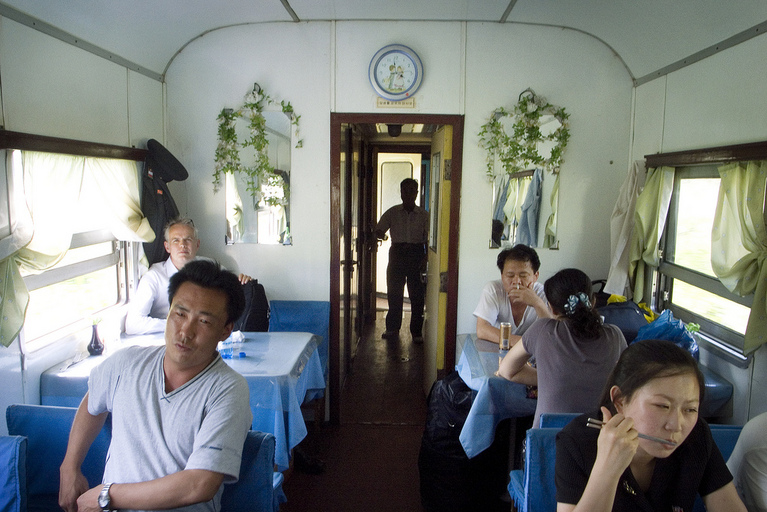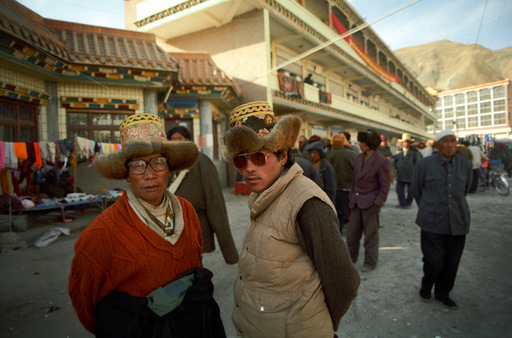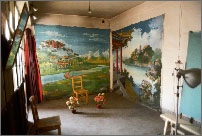April 2, 2010
Asako Narahashi's Coming Closer and Getting Further Away
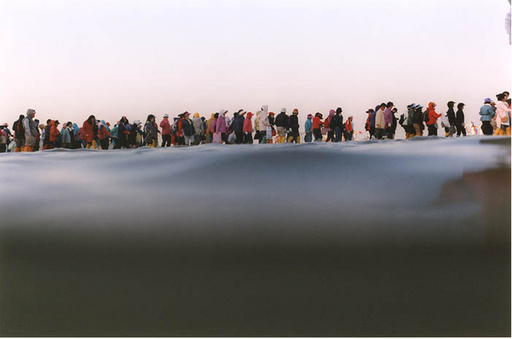
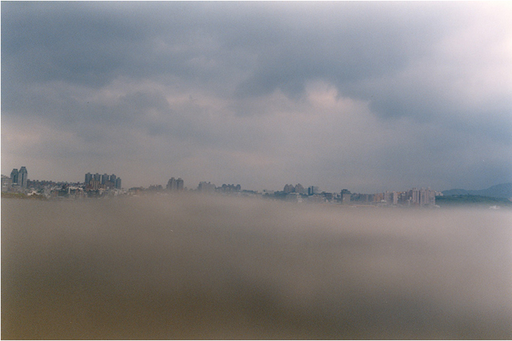
I'm a huge fan of Asako Narahashi's work. Her book Half Asleep and Half Awake In The Water is one I've turned to many times over the last two years (my copy is was signed by the artist at an opening here in NY, but ironically was waterstained by one of my kids a few hours later). Ms. Narahashi is now showing a new related body of work titled Coming Closer and Getting Further Away which she bills as the "oversees version" of Half Asleep. These photos taken in Dubai, Paris, Korea, Brooklyn, Taiwan, and Germany are infused with her signature lyricism, but unfortunately the full project isn't available online. You can see some images from Dubai here and from Korea here. (via japan foto info)
April 4, 2010
Talking to kids about death. Sort of an easter story.
Putting Gabriel (3) and Raul Andres (5) to sleep tonight, the topic of conversation turned to death. Note the person referred to as Haraboji is the kids' great grandfather. A slightly abbreviated transcript:
Gabriel: Dad?
Me: Yes?
Gabriel: Where is Haraboji's wife?
Me: She died before you were born.
Raul Andres: How did she die?
Me: She was very sick.
Raul Andres: I got sick and didn't die.
Me: Well she was very old got very very sick.
Gabriel: Haraboji is sad. He misses her too much.
Raul Andres: Your abuelito and abuelita died.
Me: Yes.
Gabriel: Do you miss them?
Me: Yes.
Gabriel: Will you die?
Me: Yes.
Gabriel: I don't think that is a good idea.
Raul Andres: How would we live?
Me: I don't think it will happen for a long long time when I'm very old. You'll be men by then.
Raul Andres: Will everyone die? Everyone?
Me: Someday.
[quiet]
Gabriel: Then who will live in the world?
Me: Well, all the babies who are being born today. They'll grow up and have new babies.
Gabriel: But if we die, they'll never know us.
[quiet]
Raul Andres: I know what happens when you die. They put your body in the ground and cover it up.
Gabriel: So scientists can find you later?!
Raul Andres: And they put a rock with your name on top to remember.
Gabriel: But how can you remember everyone?
Me: Well, sometimes even after we die we give things to people. Like Gabriel even though you never met my Abuelito he gave you his ears, and Raul Andres, even though you never knew him, you have the same eyes. So I remember him every day when I look at you guys and you remember him even though you never knew him.
Gabriel: I have your Abulitos ears.
Raul Andres: I have your Abulitos eyes.
[quiet]
[The sound of two kids alseep.]
Related: Abuelito's Ears, Bloodlines
April 5, 2010
Youssef Nabil's Portraits
 Marina Abramovic by Youssef Nabil
Marina Abramovic by Youssef Nabil
Egyptian photographer Youssef Nabil uses the forgotten technique of hand coloring silver gelatin photographs to create images evoking an instant pang of nostalgia. For me they recall Mexican wedding photos from my parent's and grandparent's era (also my own Mexican baby photos), and Mexican movie promo photos, I distrust my instant attraction to the work and yet feel compelled by the technique/images nonetheless.
April 7, 2010
Jeans from North Korea
I've seen Noko Jeans links floating around for a few years but always thought they were some sort of joke. Apparently not. Clicking through to the website shows candid video and images from the DPRK. Every time I see video from there it reminds me of China in the mid 80's. The whole enterprise is odd/fascinating and could easily be mistaken for an art project.
HELLO IT'S Noko Jeans! from Noko Jeans on Vimeo.
April 10, 2010
Beef Slum Galleon Spiced, A Mystery Solved
Eighteen years ago at dusty backpacker restaurant near the Labrang Monastery I encountered an English language menu item title "Beef Slum Galleon Spiced." At a table was my buddy JP, a few wayward Australians (one named Jennita Gay who was surfing her way around the world, but somehow ended up in Tibet), and a Japanese kid named Goto who rarely spoke. It's possible my friend Oliver was there too. We took delight in what we assumed was translation gone horribly wrong. Ever since then, every few years, JP and Goto—independent of each other—bring up the mysterious and wonderful sounding Beef Slum Galleon Spiced trying to imagine the tortured path that brought the string of words into being.
Today I came across the word "slumgullion". According to the OED it's a North American mining term for the "muddy deposit left in mining sluice" [Slum is an archaic English term for mining mud and gullion is a term for a mining pit]. Miners, being miners, started referring to their stews as slumgullion and soon the definition of slumgullion as a stew began to dominate. The earliest reference I could find to the term was in a book titled "The Best of Kin Hubbard: Abe Martin's Sayings and Wisecracks." The passage is account of a story from 1828 but it's unclear when the passage was actually published. [The OED 's earliest reference is from Mark Twain's Roughing It where the word is used jokingly to describe a "weak drink." By then and through the early 1900's the references are generally pejorative and associated with poverty or just a really crappy stew. Here's another reference, this one from Jack London. There is some speculation that term Mulligan Stew, also a hobo type stew, is a bastardization of slumgullion stew.... This seems like a stretch to me. Recent web references are generally nostalgic— septuagenarians recalling delicious stews of their youth.].
These references piqued my interest in slumgullion recipes which led me to this page and this page where the respective authors take you through their own exploration of the word/stew.
From the 1860's to the 1940's slumgullion seemed to be a relatively common American term. It was mentioned enough in literature and in news reports to turn up in modern google searches.
So it seems that our Tibetan restaurateur was not involved in a seriously misguided translation as we had suspected, but he was probably just using a pre-Communist revolution English dictionary from the 30's (these were common in China in the early 90's) and slumgullion was the proper translation of his dish. Somewhere along the line there was some phonetic spelling going on and gullion became galleon. An easy mistake! Mystery solved!
Tangentially Related: Slumgullion Pass, The Cannibal of Slumgullion Pass, & a NTimes story on John Roberts despite his other failings likes the word slumgullion.
April 14, 2010
Yushu Earthquake
A huge earthquake struck Yushu province yesterday. It's a remote and beautiful part of the world and conditions there are tough in the best of times. High passes, bad roads, and poor communication are the norm. In my trips there through the region I've made many friends. All must be suffering now.
My guess is that the true scale of this calamity will never be known and the reports of the dead will be wildly underestimated.
An account of my first trip to Jiegu in 1999 (Jiegu is the Tibetan name, Yushu is the official Chinese name): Xining-Garze
News links: NY Times, Wall Street Journal, Google Quake News, Seismic Monitor
Update: Firsthand report of the quake.
Update: The Boston Globe put together a devastating set photographs from the Yushu as in the aftermath of the quake. A story in the NYTimes about post-quake tensions in the area.
April 15, 2010
Anne Hardy
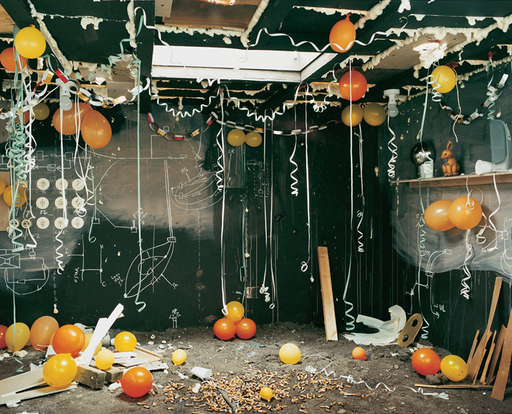
Anne Hardy's images of empty imaginary rooms are one part photography, one part performance art, one part sculpture. Of her work curator Francesco Manacorda writes
"she meticulously turns her studio into a theatre set entirely constructed for the camera’s eye only. Imaginary rooms are given three-dimensional temporary presence only to be translated into two-dimensional records and then destroyed. Always empty, they are full of the residues left behind by the fictional actions of a character or a group of people who have seemingly just left them. Comparable to the effects of the absent ball in the mimed tennis game, her photographs aim at the fictionalisation of the world around her through the construction of sets that rotate entirely round absent actors."
While one could argue this could be said about any good still life, the suggestion of absent characters who have just stepped out is especially strong in Hardy's work and infuses it with an air of mystery.
Of her physical process of making her work she writes
"The whole space is structured around the position of the camera. It's put together as a photograph, rather than an installation. Sometimes I go back and reshoot things, moving something 10cm this way or that. The actual moment of taking the final photograph can almost seem - not an anticlimax, but such a tiny thing."
You can read the full interview here. The Manocorda quote can be found in an essay titled Two Dimensional Sculpture.
